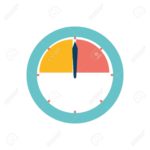A recent Wall Street Journal article examined 8 stock market indicators that are out there and in common usage. The point of the article is that all 8 currently conclude that the S&P 500 Index is overvalued by between about 5% and 20%. The indicator that the author (Mark Hulbert of Hulbert Financial Digest) says is the single best (the percentage of household equity currently allocated to stocks) predicts that the S&P 500 is overvalued by about 15%. Here is a link to the article:
https://www.wsj.com/articles/the-8-best-predictors-of-the-long-term-market-1533521521?mod=hp_jr_pos1

Next 10 Years
Here is a summary of the indicators mentioned in this article as being the most statistically significant:
- % of household equity allocated to stocks, from Philosophical Economics blog (higher is bearish, lower is bullish)
- Q Ratio, which is market value divided by replacement cost of assets
- Price to Sales Ratio of stocks
- The ratio of Total Value of Equities to GDP, which is Warren Buffet’s favorite indicator
- CAPE Ratio developed by Nobel Laureate Robert Schiller, which is a version of the P/E Ratio
- Dividend Yield of the S&P 500 – lower is bearish, higher is bullish
- Traditional P/E Ratio
- Price to Book Ratio
Hulbert, the author of the article, is testing the predictive power of each of these indicators with respect to the expected returns of the S&P 500 over the ensuing 10 years. Hulbert back tested each of these indicators to see how they would have predicted 10 year the S&P 500 performance using data back to 1951. This is one way to use indicators, but it is not the only way, and it is not the way that I use indicators.
Why I Use Indicators
I use general institutional buying and selling, accumulation and distribution, as indicators to tell me the general direction of the market at a point in time. I am not trying to predict what the stock market’s performance might be during the next 10 years. Though I would not label my indicators as “short-term”, I would say that they are more “at the moment”, and indicative of market momentum at that time. When my indicators tell me that institutions are in an accumulation phase, then I will allocate more of my assets to stocks. When institutions are selling, I will sell stocks and allocate more to bonds or cash. As it has been for much of the time since the 2008 Financial Crisis, currently my indicators tell me we are still in an accumulation phase and that we should still over-allocate toward stocks. I am confident that if we do find ourselves in a correction phase, that my indicators will provide me enough warning to bail out before the worst of the carnage. This is because I have personally backtested my indicators and that they showed red flags in time to live to fight another day.
IMO
The P/E and CAPE ratios have gotten a lot of press lately because they are historically high. I say that this is because the markets are forward-looking whereas the ratios are backward-looking. Investors see that corporate profits are up and will likely continue to rise for a variety of reasons. Stock prices represent the expectation of future earnings rather than the past. Because the outlook for corporate profits is so rosy, these ratios are historically high. Q Ratio may be obsolete because we have transformed into a service and high-tech economy and the replacement cost of assets isn’t as viable a concept as it was when we were a manufacturing and hard-asset economy. The point is that there are holes in a number of these indicators. Even so, if the average over-valuation is in the 10%-range, and the stock market suffered a 10% correction, would that be so bad? And do you believe that the market would eventually recover that 10% correction? I believe so, and that is why I will continue to rely on my own indicators rather than those described by Hulbert in this WSJ article.
